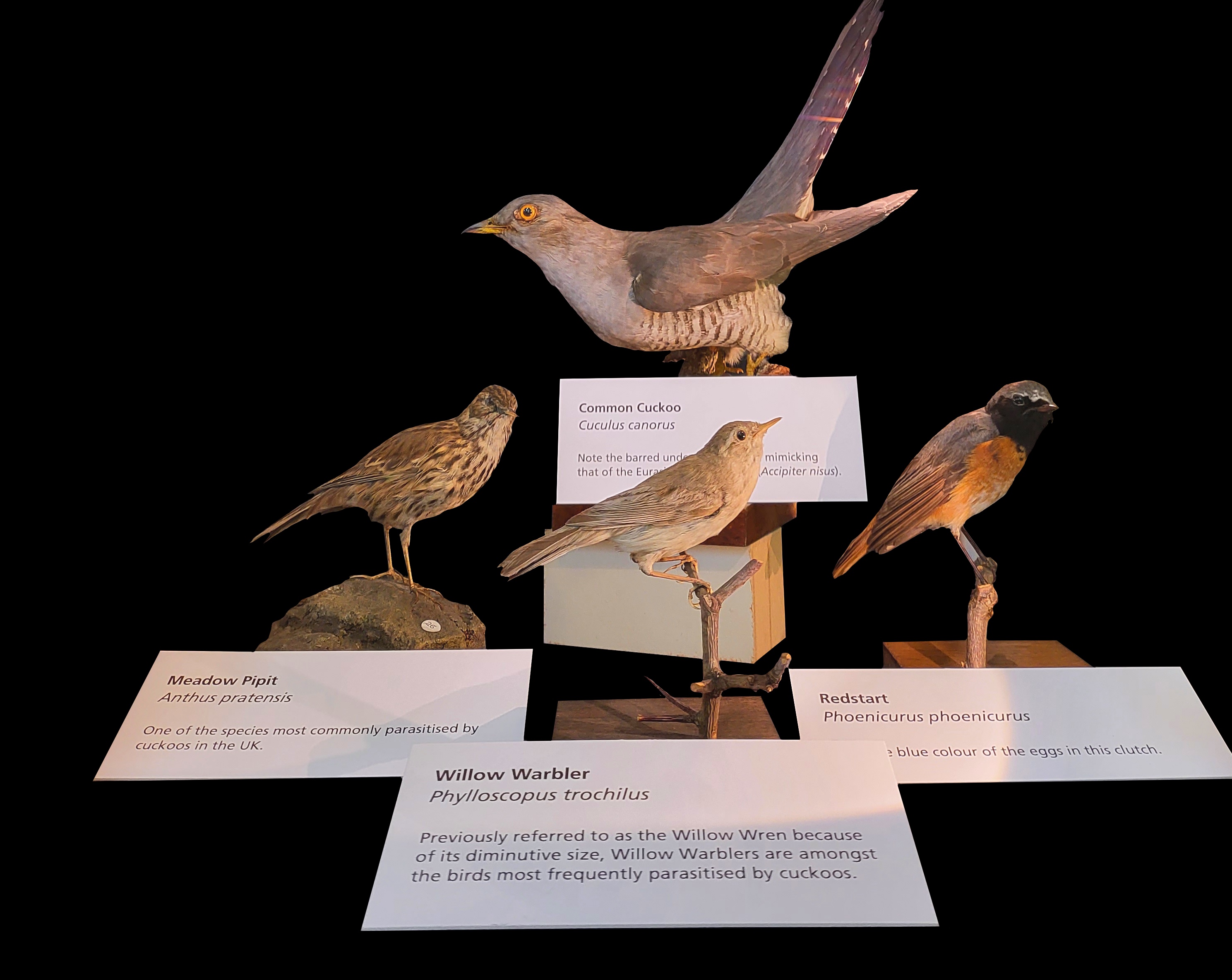25 MAY – 20 JULY 2023
Presenting... Brood Parasites was a temporary exhibit at Oxford University Museum of Natural History about birds that lay their eggs in the nests of other birds.
Several groups of birds around the world are obligate brood parasites, but the common cuckoo (Cuculus canorus) is the only one that lives in the UK. Obligate brood parasites have lost the ability to build nests and incubate eggs themselves, so rely on the host bird to raise their chicks. But how do they get away with this?
The "barred" under-plumage of the adult common cuckoo mimics that of the sparrowhawk (Accipiter nisus), a predator of many of the host species that cuckoos parasitise. This mimicry helps the cuckoo to scare away prospective hosts. When a female cuckoo finds an unguarded nest of their preferred species, it removes one egg and lays a replacement very quickly, before taking flight.
Cuckoo eggs have been observed in over 100 host species nests. Their eggs exhibit a wide variety of pattern and colour, adapted to blend with the eggs of the host species. Individual females only lay eggs of one colour and pattern, with mothers passing this trait to their female chicks. In this way, cuckoos specialise according to their hosts.
Once hatched, cuckoo chicks are typically much larger than the host species' chicks and will often "evict" the hosts eggs or chicks from the nest by pushing them out. This may be to ensure that the cuckoo receives all the food from the host parents, but there is still much to be learnt about the biology and behaviour of cuckoo chicks.

